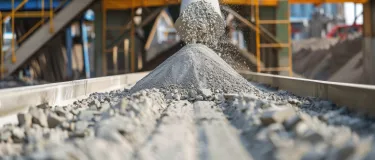How The Federal Government is Pushing for Low-Carbon Cement through Innovative Policies and Industry Partnerships
Canada is leading the way with policies and initiatives that are fostering a sustainable cement industry. From green procurement standards to industry initiatives, the federal government aims to make low-carbon cement the focus of future construction. With ambitious targets for emissions reductions and collaborative innovations, Canada is poised to redefine the future of cement production globally.
Cement and Concrete Breakthrough Initiative
The Canadian government's latest efforts in decarbonizing the cement industry reflect a holistic approach that includes cleaner fuel sources, material innovation, and stringent regulations. At COP28, Canada co-launched the Cement and Concrete Breakthrough initiative alongside the UAE, setting a goal to drive progress toward making near-zero emission cement by 2030.
The initiative focuses on five pillars: standards and certification, demand creation, innovation, investment, and cross-industry collaboration, all designed to reduce the industry's emissions by up to 40% by 2030.
This initiative is part of a larger, government-backed roadmap that prioritizes research and development of clean technologies, including carbon capture, utilization, and storage (CCUS), to be implemented by 2030. Cement plants in Canada are also aiming to adopt alternative fuel sources, such as green hydrogen and biomass, which can replace high-carbon fuels like coal.
The Roadmap to Net-Zero Concrete
Canada's Roadmap to Net-Zero Carbon Concrete by 2050 is a groundbreaking policy co-led by the Cement Association of Canada (CAC) and Innovation, Science, and Economic Development Canada. The roadmap aims to achieve over 15 million tonnes in cumulative emissions reductions by 2030, supported by federal incentives to accelerate clean technology adoption.
Beyond technological advancements, the roadmap emphasizes standards to make low-carbon cement a mainstream product, ensuring that materials like Portland-limestone cement (PLC) and supplementary cementitious materials are widely adopted. Additionally, Canada is implementing a "green procurement" policy to prioritize low-carbon cement in public sector projects.
This policy, along with performance-based codes and specifications, is intended to lower the "embodied carbon" in construction.
Future Prospects for Canada's Low-Carbon Cement Market
With these initiatives, Canada's low-carbon cement industry is positioned for significant growth. As demand for sustainable construction materials rises globally, Canada's leadership in clean technologies will likely drive market expansion. Canada's comprehensive strategy to decarbonize the cement sector aligns with its broader climate plan, helping position the country as a leader in low-carbon manufacturing.
The shift toward carbon-neutral cement is expected to foster growth in green construction markets domestically and internationally, paving the way for Canada to become a top exporter of low-carbon construction materials.
Explore Lafarge Canada's Low-Carbon Solutions
As the demand for sustainable construction materials grows, Lafarge Canada is positioned well, offering a variety of low-carbon cement products designed to meet green building standards. From offering circular supplementary cementitious additions to innovative low-carbon concrete mixes, Lafarge is committed to supporting Canada's transition toward sustainable infrastructure.
Get in touch today to learn about how Lafarge's products can help you achieve your sustainability goals and join Canada's journey to a greener future.






